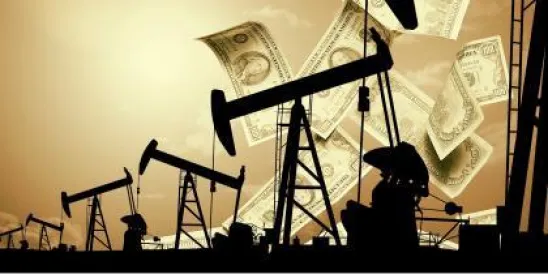Despite the current challenges of the COVID-19 pandemic and low LNG prices, the future is bright for LNG. Bracewell considers the impact of the COVID-19 pandemic, the lessons for the LNG sector and how the LNG SPAs of the future may be adapted so the LNG industry can continue to thrive.
An industry in turmoil
The LNG industry was already dealing with more than its fair share of challenges when it was thrown further off course by the “double whammy” of reduced energy demand due to the steep decline in economic and industrial activity triggered by COVID-19 and the plunge in LNG prices caused by the sudden oil price crash.
Even before the pandemic was on the horizon, participants in the LNG industry were describing 2019 as a turbulent year. Beginning in the winter of 2018/2019, the combination of over-supply of LNG (partly due to new supply from the US), weaker demand in Asian markets and warmer weather caused the beginning of a 15 month erosion of delivered LNG prices in global markets. Whilst the trend towards an over-supply and low-price environment is clearly favourable for LNG buyers, it creates significant hurdles for the wider LNG industry. Low (or in some cases negative) margins deter investment in new projects by LNG suppliers and significantly constrain the availability of sources of financing for new LNG projects.
The emergence of the pandemic and the oil price crash in early March have served to rapidly accelerate the trends that were witnessed throughout 2019, and to further propel the LNG industry into an over-supply and low-price environment. Further, LNG projects that are under development are facing significant delays due to COVID-19 induced manpower issues.
The future is brighter for LNG
Despite the current headwinds being faced by the LNG industry, there are good reasons to be optimistic about a considerably brighter medium and long term future. Perhaps the most important factor is that global population growth will continue to drive an increased demand for energy. A global population of nearly 10 billion people is predicted by 2050, an increase of around 30% from today. Much of that growth is occurring in developing regions where demand for energy is also being driven by increased economic prosperity. That very large emerging middle class will continue to boost energy demand over the coming decades. Production of natural gas, and LNG, will almost certainly need to rise in order to meet some of that additional demand.
It is not just increased demand driven by population and prosperity growth that signal a likely resurgence and escalation of the LNG business. Indeed, there are other forms of available energy, such as coal and oil, which have historically been cheaper and more readily accessible and transportable that would have otherwise been more natural solutions to meet additional demand. However, the (arguably too reluctant and unhurried) acknowledgement of climate change and the need for “cleaner” sources of energy finally reached mainstream public consciousness in 2019, to such an extent that it has begun affecting the policies and behaviours of energy companies, shareholders, financiers, governments and other stakeholders. That trend is unlikely to change and could result in a boon for the LNG business, notwithstanding the calls from some quarters that all hydrocarbon investment should cease in order to focus exclusively on renewable sources of energy. This ignores the underlying reality that the infrastructure required for the “cleanest” forms of energy are simply not sufficient for an immediate transformation of the fundamentals of our energy systems in the short term, given that 80% of today’s energy demand is currently met by coal, oil and gas. So although renewable energy sources will continue to prosper and form an increasing proportion of the energy mix, hydrocarbons will constitute a critical (and likely majority) component for many decades to come.
These new dynamics mean that the focus of the traditional oil and gas companies is likely to increase on the development of natural gas and LNG projects at the expense of oil developments. The less carbon-intensive nature of gas compared to oil (gas releases approximately 20-30% less carbon dioxide when burned) means that it is likely to be favoured by climate conscious investors and governments as the “transition” fuel, and it is expected that gas and LNG will form a proportionately larger segment of the energy mix in future decades, whilst coal and oil will decrease (as a proportion, even if not in gross terms). This can be seen in the approach of a number of the supermajors in recent years, who have actively been re-aligning their portfolios to be more focused on gas.
For natural gas to perform the role as a transitional energy source, a larger LNG industry is inevitable. The significant, and obvious, limitation of natural gas is that, unless liquefied, it must be commercialized close to the source of production. LNG solves that issue and makes gas globally transportable. As oil and gas companies focus their efforts on gas discoveries, it is an inescapable consequence that liquefaction and re-gasification plants will become global necessities. This up-scaled industry will continue to attract a more diverse number and nature of participants, which will have the foreseeable effect of greater innovation, which we are already beginning to see with the advent of floating LNG, for example.
Governments also naturally have a critical role to play in the development and regulation of energy systems. Climate change commitments and public perception will be a factor in developing public policy on energy infrastructure and projects, and this will conceivably operate in favour of gas and LNG projects. Large LNG projects also have other broader benefits for governments in that, for developing countries in particular, they can act as a material stimulus for economic growth. In addition, re-gasification plants provide a country with optionality in terms of energy supply and, accordingly, offer a considerable national security benefit. On that basis, it is not difficult to predict that LNG projects will continue to receive considerable political support from host governments.
In order to realise this potential, the LNG business may need to adapt and evolve to face the challenges of current and future circumstances, such as the impact of COVID-19.
LNG market response to COVID-19
The global lock-down resulted in a massive and sudden reduction in energy demand. The International Energy Agency speculates that global energy demand could fall by 6% this year (having already dropped 3.8% in Q1).
The reduced downstream demand for regasified LNG has resulted in some Asian LNG buyers being physically unable to unload scheduled LNG cargos. With limited storage and inventory levels reaching “tank tops”, buyers have been forced to turn away cargoes. Europe has recently been the destination of last resort for LNG that cannot be sold elsewhere. In fact, with the contribution of excess cargoes from China, European Q1 2020 imports were 30% higher than Q1 2019. However, demand has plummeted since mid-March and the continent cannot continue to absorb all of the current global excess.
Unsurprisingly, LNG buyers have immediately sought ways to reduce obligations under long term LNG sale and purchase agreements (SPAs). Whilst SPAs set the agreed annual contract quantities (ACQ) and the price of LNG to be acquired by a buyer on a take-or-pay basis, the buyer is often permitted some flexibility. SPAs can, for example, provide for the deferral of delivery of a portion of scheduled cargoes. Further liberty can be afforded to the buyer to permit it to exercise downward quantity tolerance (DQT) which allows the buyer to fall short of its take-or-pay commitments without incurring an obligation to make-up that shortfall in the future. The right to cancel outright certain volumes has historically largely been resisted and is not a common feature of most SPAs, but over the last few years this option has also become a more popular request from both sellers and, in particular, buyers.
In this environment, buyers have certainly been triggering those deferral rights, DQT entitlements and cancellations where available. However, there are, of course, limitations to these flexibilities. Deferrals and cancellations are for limited volumes and DQTs generally only permit reductions of 5%-15% of ACQ. Moreover, DQTs can often only be triggered on operational grounds (rather than for economic reasons) and usually have to be agreed in advance of the annual contract year, rather than triggered on an ad hoc basis.
If a buyer requires a more significant shift in the contractual arrangements and the seller is unwilling to renegotiate, the last resort is the issuance of a force majeure (FM) notice. There is no standard FM clause in LNG SPAs. Whilst many expressly include epidemics as a trigger event, many exclude market changes or a reduction in demand as being a valid reason to claim FM. Operational issues at terminals may also not permit an FM claim – in many cases, the pandemic itself (and even lockdown) does not prevent an LNG import terminal from unloading LNG. Terminals can be operated in remote mode and adaptations have been made for efficient operations, including the digitisation of terminals to meet the challenges presented with distancing rules.
The COVID-19 pandemic has resulted in different approaches in exercising these various contractual rights:
-
China (the world’s second largest LNG importer), with CNOOC leading, was the first to issue FM notices. These notices were supported by FM certificates issued by the China Council for the Promotion of International Trade (which were disputed by Total, Shell and Qatargas).
-
India (the world’s fourth largest LNG importer) was the next to issue FM notices as the world’s second most populous country entered lockdown. Gail, Gujarat State Petroleum Corporation and Petronet LNG amongst the first to issue such notices.
-
Japan and South Korea (the world’s first and third largest LNG importers respectively) were more cautious – partly due to increased LNG storage capacity. Instead, exercising DQTs and rescheduling and swapping cargoes has been the favoured approach.
The contractual measures have had mixed success. Long term contracts require long term relationships and sellers and buyers will be keen to preserve their relationships and to avoid arbitration. The issuance of FM notices or even the exercise of DQTs will often therefore trigger a path to renegotiation rather than the suspension or termination of an LNG SPA or the escalation to a dispute. Nevertheless, the pandemic has demonstrated that not all SPAs were fit for purpose in responding to the crisis.
How the LNG industry might respond
History has repeatedly illustrated that the LNG sector adapts to remain relevant. COVID-19 highlighted that long-term LNG SPAs do not adequately help many buyers deal with such pandemics. Lessons learnt from COVID-19 are likely to lead to the LNG industry making changes to the terms of future long term LNG SPAs. Future outbreaks or other pandemics will become key concerns and, to the extent possible, solutions will be sought within the contracts to address these concerns. In particular, more attention will be given in LNG SPA negotiations to buyer rights to mitigate their exposure if catastrophic events, such as a pandemic, occur. Whilst buyers are conscious of the importance of preserving relationships, the glut of LNG and low demand has resulted in a buyer’s market and they may be in a position to exert greater leverage in negotiations.
A buyer termination right for catastrophic events would be the most far reaching tool for a buyer. Most LNG SPAs already have termination triggers for material breach such as bankruptcy and sustained FM, but not for a catastrophe like COVID-19. Whilst buyers are currently in a strong negotiating position, such a blunt instrument would likely be resisted for a number of reasons:
-
The LNG industry is cyclical. Demand will likely return at some point and LNG buyers won’t necessarily have the upper hand in future negotiations. Buyers need to maintain reputations and long term relationships with sellers - often over the course of decades.
-
The termination of SPAs for a short term issue (in the context of potentially a 15-25 year term) may not be the remedy that buyers require. For numerous buyers (particularly those in Asia) security of supply is a critical consideration, and termination rights would jeopardise that objective.
-
Perhaps most crucially for new projects, sponsors and lenders in green field projects are unlikely to agree to early termination by the buyer due to a catastrophic event. Long term LNG SPAs underpin the financing of many LNG projects with the committed sales forming a pre-requisite for that financing (as they constitute the revenue stream from which the debt will be repaid). This is therefore a “bankability” issue for LNG developers that require project financing. Without certainty of revenue, a project either won’t get built or will need to rely on other forms of revenue/credit support to obtain financing.
The more realistic outcome for LNG SPAs is likely to be less draconian than a buyer termination right, and could include the following developments:
-
Increased DQT on volumes. This could just be an increased overall DQT percentage or an additional DQT percentage which would allow the buyer such further flexibility for a set percentage of ACQ if a defined catastrophic event occurs.
-
More robust cargo cancellation rights for buyers. This would, of course, be subject to volume limits, agreement on cancellation charges and, possibly, trigger events.
-
Price review clauses could become more commonly triggered by a major change in market conditions (rather than just after the passing of a prolonged period). There are complications to this, as there will likely be a duration and value thresholds (including level of price divergence) required to qualify what constitutes a “major change”. A temporary price shock due to a pandemic might not leap that hurdle. These clauses also often include a benchmarking exercise against comparable LNG sales prices within a specified recent window before the review date. Again, the timing for this window will need to be considered to factor in the impact on pricing in the context of a prolonged pandemic. If parties cannot agree to a solution, usually the existing price either remains or it is put to an expert to determine. A buyers’ market might see a shift towards the latter.
-
Increased flexibility on delivery scheduling and enhanced provisions detailing the logistics for diversions and alternative arrangements required if a catastrophic events occurs. Whilst finding alternative arrangements in the current cycle of low demand might be challenging, future scenarios could see certain jurisdictions locked down and others open, and, in any event, sellers are likely to seek more prescriptive steps for the buyers to take in a catastrophic event.
-
Demurrage and allowed laytime may be relaxed to account for berthing complications due to terminal staffing/equipment issues.
-
FM clauses will also be subject to more scrutiny and revision. Clauses may well directly address pandemic scenarios and what does (and does not) constitute FM – perhaps with illustrative examples to avoid disputes as to when FM is triggered. For example, if there is a pandemic, FM may only be triggered if the buyer is physically prevented from loading or unloading a cargo, and lockdown and plummeting prices will not otherwise trigger FM.
-
A good faith obligation of the seller and the buyer to work together to find a solution if a catastrophic event occurs. Although agreement on revised terms can’t be guaranteed, this sets a framework to address developments which might be difficult to predict or draft to accommodate.
Along with the rest of the energy sector, the LNG market is adjusting to the unprecedented challenges presented by COVID-19. The jolt experienced over the last few months should not overshadow the continuing growth of LNG’s prominence in the energy transition story. There is a bigger picture. Significant, but not seismic, operational and contractual adaptations have and will be made within the LNG market to ensure its enduring growth.





 />i
/>i

